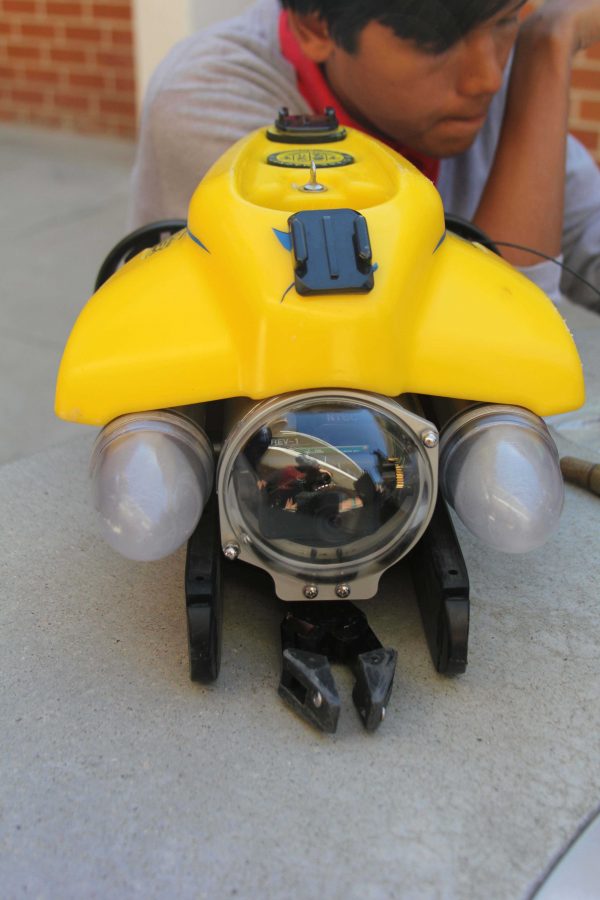An Ocean Defender visits Clark
One of the ROVs used by the Environmental GIS students. The manipulator is seen here.
“I didn’t know our oceans were this dirty,” said junior Gennine Lagman, following the Oct. 16 oceans presentation. Nearly 100 Clark students attended the presentation by Kurt Lieber, a conservationist from Ocean Defenders Alliance. It was Lieber’s first time presenting at Clark, but the Environmental GIS students have worked with him in the past.
“Mrs. [Dominique] Evans-Bye is helping me with spreading the word out, and telling people how ROV is being utilized,” Lieber said. An ROV is a remotely operated vehicle. The class uses the ROVs to locate the trash with the video ray and the sonar. “If it weren’t for our ROV, Ocean Defenders would have to send divers down. We have an attachment called a manipulator, which is a robotic arm that lets us pick up the trash,” said senior Xochil Garcia, a student in the Environmental GIS class.
According to Lieber, 360,000 fish die every year because of Ghost gears, which are commercial fishing tools, such as lost and abandoned lobster traps, crab pots, nets, lines and ropes.“This information will help you understand how the ocean can advance and how we can help the ocean,” Lieber said. In 2002, he founded the Ocean Defenders Alliance after he kept finding commercial fishing gear at the bottom of the ocean. Since then, Lieber has been taking volunteer divers out to sea to clean as much debris as they can. Lieber has been diving since 1979 and has been volunteering since 1982.
During the presentation, Lieber informed students about the waste in the ocean and how wildlife is affected. “I really liked the Kelp Huggers’ presentation,” Lagman said. The Kelp Huggers are a group of students from Evans’ Environmental GIS class who are working on a project to enter into this year’s Lexus Eco Challenge. “We can help them by Instagramming pictures of litter and hashtagging it #litterati,” added Lagman. By doing this, students are helping the Kelp Huggers trace litter in certain places.

INTERESTS/HOBBIES: Taking photos, editing photos and crying and swimming and sleeping and playing with my dog
EXTRACURRICULAR ACTIVITIES: Publications...








